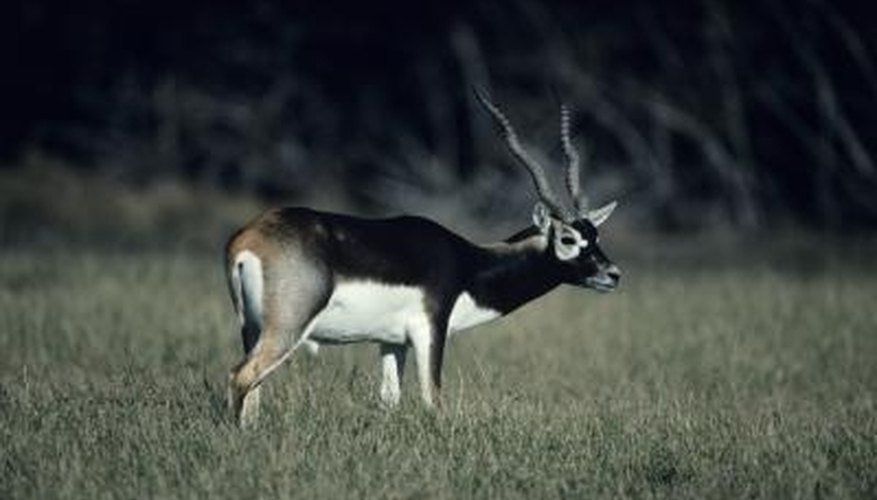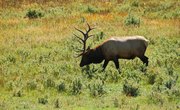
The blackbuck antelope (Antilope cervicapra) is a small exotic game animal native to India and Pakistan. The males, which rarely exceed 110 lbs., are hunted for their attractive spiral horns. In 1932, a herd was introduced to Kerr County, Texas. The animals flourished in the wild and on game ranches, and are now found in 86 of 254 Texas counties. Scoring organizations worldwide keep trophy records and maintain databases on blackbuck antelope. Each organization has specific guidelines for scoring the animals.
Items you will need
Scoring organization's manual
Photos of horns
Flexible 1/4-inch steel measuring tape
Masking tape
Scoring form
Consult the scoring organization's manual for specific instructions on submitting data about the antelope's horns. For example, Safari Club International (SCI), the most used system in world, measures horns along the spiral, while the Lone Star Bowhunting Association measures in a straight line. Some organizations provide species-specific score forms; others categorize scores by horn type. If the score is going to be entered in a record book, contact the organization for the nearest measuring official.
Prepare the horns after the skull has been cleaned and the horn sheaths removed. The horns are to be dried naturally at relative humidity for at least 60 days after harvest. Horns are required to be at room temperature when they are scored. If the animal is frozen, the horns are to be thawed and dried for 60 days, regardless of when placed in cold storage. Trophies altered from their natural state are disqualified. If photos were not taken at the kill site, provide clear images of the horns from the left side, right side and front.
Find the length of the horns by measuring from the lowest point of the front base to the tip. For associations that use a straight line measurement, stretch the tape measure from the base to the point of the horn tip. For organizations that use the spiral measurement, hold the end of the tape measure at the lowest point of the front base. Wrap the measure around the horn, following the spiral line to the tip.
Determine the horn circumference by measuring the widest part of the base. Some organizations do not allow measurements along an irregular edge. If this is the case, measure the circumference at a right angle to the axis of the horn, making sure the tape is on the horn material. Some scoring associations also require four separate circumference measurements. Divide the horn length by 4, and place masking tape on the quarter marks. Measure the circumference around each mark.
Find the score by using the organization's formula on its scoring sheet. For example, the Lone Star Bowhunting Association adds the length of each horn, plus the four circumference measurements along the horns. The difference between each measurement, or the amount of asymmetry, is then subtracted from the total. The minimum score to enter the record books is 40; the current record is 79, with a 22 1/2-inch right horn. For SCI, the length and base circumference measurements for each horn are added and rounded up to the nearest 1/8 inch. The minimum score is 48 for bow hunters, and 54 for standard hunters. The record is 81 1/8.
Measure the spread of the horns by determining the length between the tips. If the tip-to-tip measurement is not the widest point, find the greatest spread by measuring perpendiculars at right angles in relation to the center line of the skull. Generally, blackbuck antelope horns are farthest apart at the tips. For this species, the spread information is usually only supplemental data and not part of the score.
Tips
- Have another person assist while measurements are being taken. It is especially helpful to have another set of hands when measuring the spiral line of the horns.
References
Tips
- Have another person assist while measurements are being taken. It is especially helpful to have another set of hands when measuring the spiral line of the horns.
Writer Bio
Since 1992 Bridget Lewison has worked in practically all aspects of the newspaper business. Her work has appeared in "The Pasadena Star-News," the "Inland Valley Daily Bulletin," the "Mohave Valley Daily News," the "Kingman Standard," the "Arizona Independent" and the "Las Vegas Tribune." Her work also has been distributed by the Associated Press. From 2001-03 Lewison ran Pitzer College's public-relations office.



